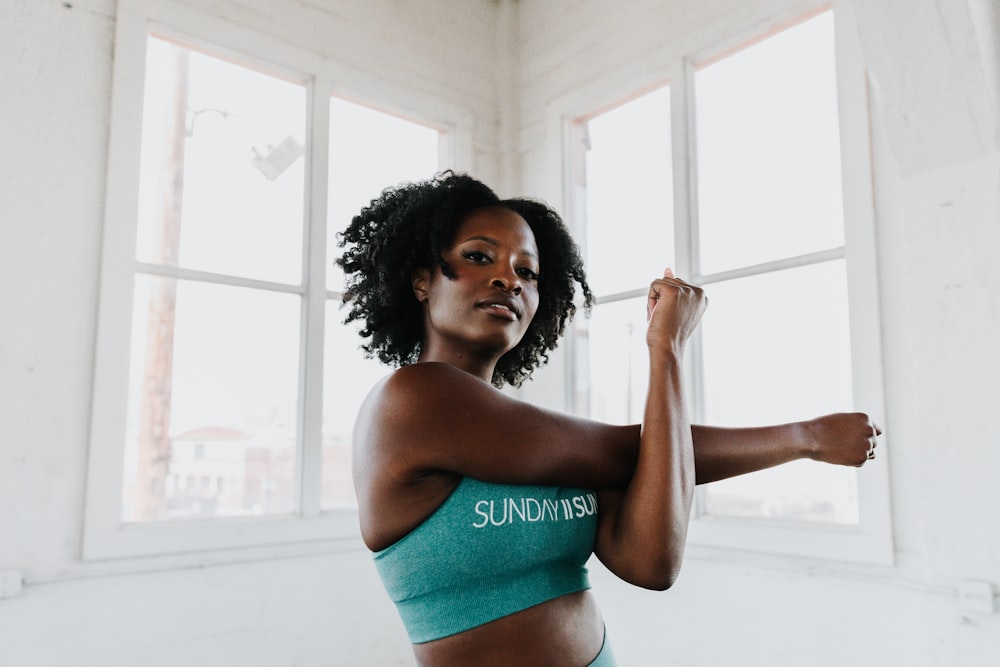
If it’s in your genes to have unproportionally large arms, you might be wondering “how can I check DNA” to slim your arms when your genetics are working against you. Have you been doing the work, putting in time at the gym, but you still have stubborn fat on your arms that refuses to ‘come off’? Do other members of your family seem to have unproportionally large arms?
Sometimes, regardless of what we do in the gym, we end up seeing results in some places on our bodies, while other areas of the body don’t seem to change much. For women and men, the arms can be one of those areas that are more difficult to target. It can often take longer to see results on your arms. That can be due to genetics, high levels of cortisol secretion, or low levels of testosterone.
If you’re thinking “how can I check my DNA” and trying to figure out how to slim your arms, tone them, or lose fat in your arms, the only way to do that is to lose weight all over. This can be frustrating for women who don’t want to lose weight everywhere – they only want to lose weight in their arms. Unfortunately, spot reduction is rarely possible to achieve. However, perhaps you’re okay with losing some weight all over, and you could try to do that and see some results in your arms.
When you do arm workouts frequently, you’ll build more muscle in your arms, which does help burn fat.
On the other hand, if you want your arms to get bigger, then you have to do exercises that target your arm muscles 2-3 times/week.
Unfortunately, our genetics play a pretty significant role when it comes to our body shape, so it makes sense that “how can I check my DNA” bothers you so much. Regardless of how much work we put in, if you don’t have the genetics to grow prominent arm muscles, then you may never see the big gains you’re hoping for.
That’s not to say that you shouldn’t work your arms. Even if they don’t ‘pop’, having strong arm muscles will increase your metabolism and contribute to fat loss all over, including your arms. You may just need to be even more patient!
If you’re ready to start targeting your arm muscles, read on for some tips on how to slim your arms and tone them, even if genetics are working against you:
How can I check my DNA and understand the Muscles in my Arms
There are three large muscles in your upper arms. Your biceps are located at the front of your upper arms, and are used for pulling and lifting. Your triceps are a large muscle running along the back of your arm that is used to extend the elbow. Your deltoids have three parts. Your deltoids attach your arm to the rest of your body and help you move it in different directions.
If you want to learn how to slim your arms or tone them, target these three muscles during your arm workouts.
But if you are wondering “how can I check my DNA so that I know how to slim down one particular area”, you simply can’t.
Ashley Hawksworth, a personal trainer and nutritionist for STAG Fitness explains, “Unfortunately you cannot target where the fat comes off your body. You can, however, target muscle growth.”
Hawksworth continues to point out, “It’s a common myth that you can tone or shape your muscles. You can’t. Muscles can only grow or not grow. So, to slim down your arms, you will need to grow the arm muscles.”
That being said, your genetics are a factor when it comes to the shape of your arm muscles, and that will play a role in how they develop as you grow them.

How to Slim Your Arms with Exercises that Target the Biceps
The type of bicep muscle you were born with will determine how big the muscle looks when it’s flexed or relaxed. People with long bicep muscles tend to have big, full arms regardless of whether or not they are flexing. On the other hand, if someone was born with short bicep muscles, their arm might look small when relaxed but will have a high peak while flexed, making it appear large.
Movements that incorporate pulling or lifting work your biceps. Try not to use any momentum by rocking your body. Instead, focus on keeping your core tight and bending at the elbow.
- Bicep Curls. There are many, many variations to bicep curls, each one approaching the exercise from different angles. This is a great way to build muscle as it offers different levels of resistance to the smaller muscles within your arms. Some common variations are
- Barbell curls
- Hammer curls
- Incline curls
- Preacher curls
- Standing cable curls
Exercises that Target Triceps
Some of the best exercises if you’re trying to learn how to slim your arms involve tricep exercises. Movements that target the triceps involve pushing or otherwise extending the arm.
The muscle is made up of three heads, the medial head, the long head and the lateral head. Some people are born with a very prominent lateral head, while others have a thick long head. The medial head is deep within the arm and, while it’s activated for most types of movements, it is not prominent. If you’re looking to grow the muscle, train the long head.
Some exercises include:
- Tricep pull-downs – can be done with a rope or a bar.
- Tricep dips. Use bodyweight or hold a plate on your lap.
- Diamond push-ups.
- Kickbacks – use a dumbbell or a pulley system.
- Overhead tricep extensions using a dumbbell or pulley system.
- Skull crushers.
- Close-grip benchpress.

Exercises that Target the Shoulders
When it comes to the shape and maximum potential of muscle growth in the shoulders, unfortunately, your genes might be working against you.
Shoulder muscles can be described as either short or long. Long shoulder muscles can grow big, resulting in wide, broad shoulders, while shorter shoulder muscles typically max out before they grow very large.
To target your shoulders, try any of these exercises:
- Shoulder press – use either a barbell to work both arms at once, or a dumbbell or kettlebell to isolate one arm at a time. Isolation exercises can get better results because both arms are working just as hard. When both arms (or legs, for that matter) work together, it’s easier to let your stronger side take over and compensate for the weaker side, leading to uneven muscle development.
- Dumbbell I-Y-T-W – use dumbbells or cables for this one. It works your shoulders from every angle, isolating each deltoid, and the ‘W’ component strengthens your trapezius.
- Landmine press – Similar to a shoulder press, but a great option if you have mobility issues that prevent you from extending overhead.
- Resistance band lateral/frontal raise – This can be done from home, works two deltoid areas at once, and is gentler on your shoulders than lifting weight.
How can I check my DNA and slim my arms: The Bottom Line
It would be great if we could target specific areas for fat reduction, but unfortunately, our bodies don’t work like that.
And as we’ve seen, some people have a genetic advantage when it comes to slim arms. Some people also genetically have a higher metabolism, optimal muscle shape, skeletal structure, and the predisposition to grow larger muscles can all contribute to how defined your arms, and the rest of your body, look.
How can I check my DNA and lose weight healthily with a scientific method? Having a correct mindset is the first and most important step to a successful weight loss. Next step is to understand your DNA. Easier way to do it is to take a DNA test.
Some of these genetic traits are visible, but others require a DNA test to figure out. You can learn more about your genetic physical traits with a CircleDNA test. The results even reveal which types of exercises suit you best, based on your DNA.
The bottom line, however, is that if you want to slim or tone your arms, isolating and targeting the muscles is the only way to do it. “There are no magical foods either,” says Hawskworth. “[it’s just a matter] of eating less to create a calorie deficit that will allow your fat stores to be mobilized and used for energy.”
Muscle definition is more prominent in a body with a lower percentage of body fat, and as your muscles grow, your metabolism increases, requiring your body to burn more fat and more calories at rest. As Hawksworth explains, “Fat loss will be lost from all over the body and you may not notice much of an impact on your arms at first, but eventually, some fat will be lost there.”






